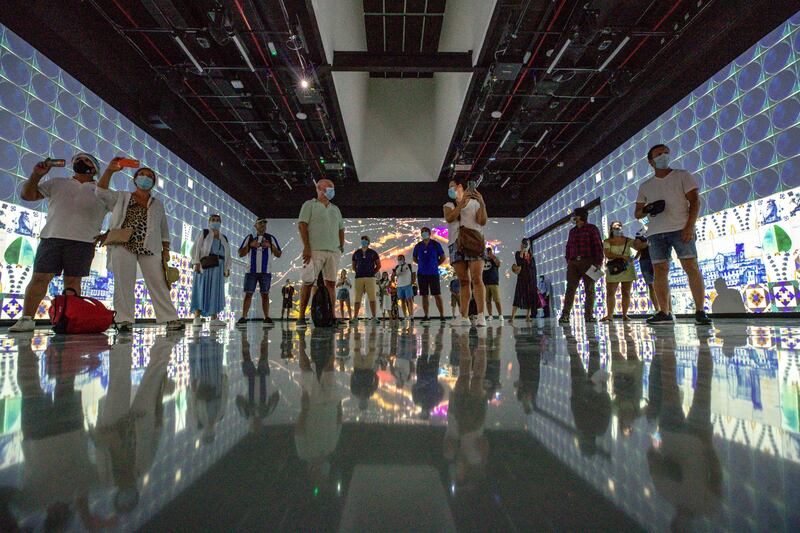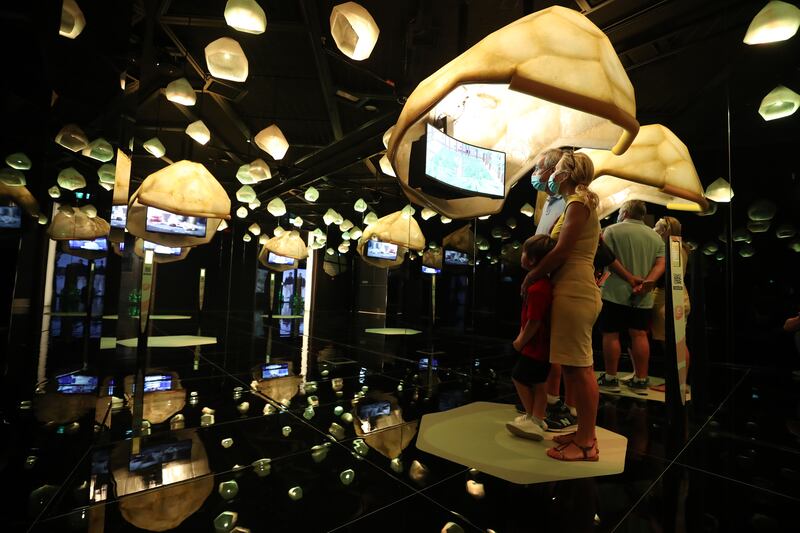The Italian pavilion at Expo 2020 Dubai will be part of a “renaissance” legacy project to preserve archaeological artefacts and art recovered from war zones.
The new centre will be set up after the world’s fair ends in March next year, Italian government officials and academics said on Sunday.
The project’s home will be the Italian pavilion, which contains a 3D life-size replica of Michelangelo’s marble statue of David.
The education programme will be led by a team involved in the digital reproduction of the 16th century sculpture. It will include online sessions and in-person workshops about efforts to preserve heritage in the Middle East, North Africa and South Asia.
“The David is our link between the past and the future. We want to handle fragile art forms that are at risk in conflict areas. It is our duty to preserve our cultural heritage and protect it,” said Grazia Tucci, of the University of Florence’s department of civil and environmental engineering.
__________________________________
Expo 2020 Dubai Day 10 highlights - in pictures
__________________________________
“Through top-notch technology and digitisation we can take a better look at art, artefacts, paintings and archaeological findings.
“Earthquakes, floods, climate change and conflict can destroy cultural heritage. The idea is that we have to prevent this from happening and not go there at the end of the conflict when they are already destroyed.”
The sessions will be for archaeologists, architects, engineers and historians.
Knowledge gained from months of working with teams on the David statue with digital scans, 3D printing and ageing the replica with marble powder will be passed on at the workshops.
“We want this to be a legacy of the pavilion. The idea is to train the trainers,” she said.
“When we transfer this approach to professionals from this area, they can do something similar for the cultural heritage here.”

During a presentation at the Italian pavilion, Dr Tucci showed photographs of the ancient Buddha sandstone carvings, in Afghanistan’s Bamiyan valley, which the Taliban destroyed in 2001.
She said digital copies of World Heritage Sites such as the giant Bamiyan Buddha statues have already been made by several researchers in other parts of the world.
The specific artefacts to be handled for restoration at the Expo site have not yet been finalised.
“The Bamiyan Buddha destruction was a pity for humanity,” she said.
“We need to create data, archives to study and preserve heritage so, just in case they are destroyed, we can use this to reconstruct it digitally.”
Cecilie Hollberg, director of the Academy Gallery in Florence, said such conservation projects conveyed a much-needed message of hope.
“The world needs strength after the pandemic we all have had to fight, and David is a symbol of the renaissance,” she said in a video message taped in front of the original sculpture in Italy.
“This is a symbol of rebirth for many future projects. Some are already under way and others will start soon.”
The Italian pavilion is in the Sustainability district of Expo 2020 Dubai. The statue of David is a centrepiece of the structure, which features kilometres of recycled ropes in its façade.


























